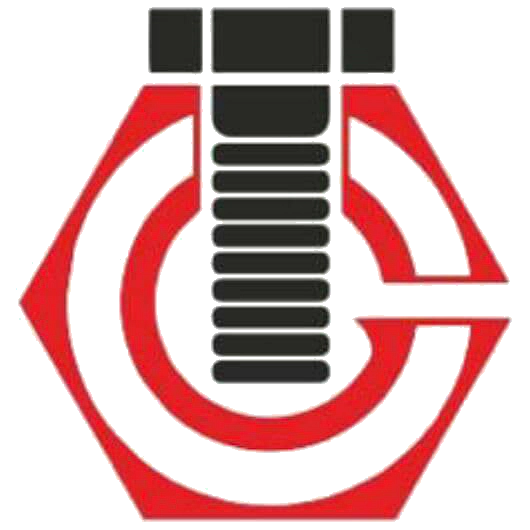Class and grade of bolts and nuts:
Depending on the type of use, screws are usually made of low-carbon iron class 4.6 and 5.6, high-carbon iron class 8.8 and above, steel and titanium. Each of these materials has its own advantages and disadvantages, which give the screw a unique feature for special use. In general, steel and galvanized screws are a good choice for humid regions or acidic and corrosive environmental conditions due to their high resistance to rust and corrosion. The grade or class of bolts and nuts is the most important factor in determining tensile stress, shear stress, torsion, and actually physical and intrinsic properties of bolts, and in fact, what is stated in engineering handbooks for choosing bolts and nuts is usually more related to Dimensional characteristics of nuts and bolts.
Class 5.6 bolts and nuts:
They are known as iron screws and they are classified as medium to low strength screws. They do not have much use in heavy industries and heavy loads and just have the role of a connector. Each square millimeter of them can bear just a load of 50 kilograms.
Class 8.8 bolts and nuts:
They are known as steel bolts and nuts, and since they have an average level of hardness and resistance, they are widely used in the various industries. In fact, they are the most widely used class of bolts and nuts. They can withstand a load of 80 kilograms in the form of tension per millimeter.
Class 10.9 bolts and nuts:
They are among the most used screws and nuts in the construction industrial sheds and masts. They are more fragile to the lower class. Their square millimeter can withstand 100 kilograms of load and can withstand up to 90% of this load without changing its shape or stretching.
Nuts standard:
The nuts have different standard depending on whether they are used in the hexagon screw connection or the stud bolt. The standard determines the thickness of the nut. The nuts for connecting the hexagonal screw are from the DIN 934 standard, and in the stud bolts, the bolts are usually 2, h and 2hm.
Grade 2 bolts and nuts:
Grade 2 bolts and nuts in the American system are according to the ASTM A307 standard and are usually supplied with zinc coating, and its use is mostly in cases where medium hardness is sufficient. They are usually produced from low-carbon steel.
Grade 5 bolts and nuts:
Grade 5 bolts and nuts in the American system are very similar to the A325 standard in the international system and have more carbon than grade 2 and are widely used in valve and pump machinery manufacturing industries.
Grade 8 bolts and nuts
They are considered to be the hardest and most carbon-rich and at the same time the driest type of bolt in the American system. These bolts and nuts are compared with class 12.9 in the international system, and although they have a slightly different heat treatment and combination, they have very similar performance.


